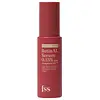What's inside
What's inside
 Key Ingredients
Key Ingredients

 Benefits
Benefits

 Concerns
Concerns

 Ingredients Side-by-side
Ingredients Side-by-side

Water
Skin ConditioningAmmonium Acryloyldimethyltaurate/Vp Copolymer
Glycerin
HumectantNiacinamide
SmoothingAlpha-Arbutin
AntioxidantEthylhexyl Cocoate
EmollientPEG/PPG-20/15 Dimethicone
EmulsifyingSodium Hyaluronate
HumectantAllantoin
Skin ConditioningRetinal
Skin ConditioningHarungana Madagascariensis Extract
Skin ConditioningPhragmites Karka Extract
Skin ConditioningDimethylmethoxy Chromanyl Palmitate
Skin ConditioningCaprylic Acid
CleansingElaeis Guineensis Oil
EmollientPoria Cocos Extract
Skin ConditioningTitanium Dioxide
Cosmetic ColorantCetearyl Alcohol
EmollientTocopheryl Acetate
AntioxidantAscorbic Acid
AntioxidantStearic Acid
CleansingEthylhexylglycerin
Skin ConditioningLecithin
EmollientTetrasodium EDTA
Copper Tripeptide-1
Skin ConditioningPEG-40 Hydrogenated Castor Oil
EmulsifyingPPG-26-Buteth-26
Skin ConditioningCaprylyl Glycol
Emollient1,2-Hexanediol
Skin ConditioningOryza Sativa Germ Extract
EmollientCyclopentasiloxane
EmollientSodium Hydroxide
BufferingWater, Ammonium Acryloyldimethyltaurate/Vp Copolymer, Glycerin, Niacinamide, Alpha-Arbutin, Ethylhexyl Cocoate, PEG/PPG-20/15 Dimethicone, Sodium Hyaluronate, Allantoin, Retinal, Harungana Madagascariensis Extract, Phragmites Karka Extract, Dimethylmethoxy Chromanyl Palmitate, Caprylic Acid, Elaeis Guineensis Oil, Poria Cocos Extract, Titanium Dioxide, Cetearyl Alcohol, Tocopheryl Acetate, Ascorbic Acid, Stearic Acid, Ethylhexylglycerin, Lecithin, Tetrasodium EDTA, Copper Tripeptide-1, PEG-40 Hydrogenated Castor Oil, PPG-26-Buteth-26, Caprylyl Glycol, 1,2-Hexanediol, Oryza Sativa Germ Extract, Cyclopentasiloxane, Sodium Hydroxide
Water
Skin ConditioningGlycerin
HumectantTriethylhexanoin
MaskingLactobacillus/Collagen/Mesembryanthemum Crystallinum Leaf Extract Ferment Lysate
Skin ConditioningCaprylic/Capric Triglyceride
MaskingPropylene Glycol
HumectantPolysorbate 80
EmulsifyingCentella Asiatica Leaf Extract
Skin ConditioningCetyl Alcohol
EmollientGlyceryl Stearate
EmollientPhenoxyethanol
PreservativeRetinal
Skin ConditioningPEG-7 Glyceryl Cocoate
EmulsifyingCeramide NP
Skin ConditioningSodium Hyaluronate
HumectantCrithmum Maritimum Extract
Skin ConditioningTromethamine
BufferingPolyglutamic Acid
Skin ConditioningHydrolyzed Hyaluronic Acid
HumectantHydroxypropyltrimonium Hyaluronate
Butylene Glycol
HumectantSucrose Laurate
Emollient1,2-Hexanediol
Skin ConditioningHydroxyacetophenone
AntioxidantInulin Lauryl Carbamate
Emulsion StabilisingSodium Acetylated Hyaluronate
HumectantPEG-75 Stearate
Water, Glycerin, Triethylhexanoin, Lactobacillus/Collagen/Mesembryanthemum Crystallinum Leaf Extract Ferment Lysate, Caprylic/Capric Triglyceride, Propylene Glycol, Polysorbate 80, Centella Asiatica Leaf Extract, Cetyl Alcohol, Glyceryl Stearate, Phenoxyethanol, Retinal, PEG-7 Glyceryl Cocoate, Ceramide NP, Sodium Hyaluronate, Crithmum Maritimum Extract, Tromethamine, Polyglutamic Acid, Hydrolyzed Hyaluronic Acid, Hydroxypropyltrimonium Hyaluronate, Butylene Glycol, Sucrose Laurate, 1,2-Hexanediol, Hydroxyacetophenone, Inulin Lauryl Carbamate, Sodium Acetylated Hyaluronate, PEG-75 Stearate
 Reviews
Reviews

Ingredients Explained
These ingredients are found in both products.
Ingredients higher up in an ingredient list are typically present in a larger amount.
1,2-Hexanediol is a synthetic liquid and another multi-functional powerhouse.
It is a:
- Humectant, drawing moisture into the skin
- Emollient, helping to soften skin
- Solvent, dispersing and stabilizing formulas
- Preservative booster, enhancing the antimicrobial activity of other preservatives
Glycerin is already naturally found in your skin. It helps moisturize and protect your skin.
A study from 2016 found glycerin to be more effective as a humectant than AHAs and hyaluronic acid.
As a humectant, it helps the skin stay hydrated by pulling moisture to your skin. The low molecular weight of glycerin allows it to pull moisture into the deeper layers of your skin.
Hydrated skin improves your skin barrier; Your skin barrier helps protect against irritants and bacteria.
Glycerin has also been found to have antimicrobial and antiviral properties. Due to these properties, glycerin is often used in wound and burn treatments.
In cosmetics, glycerin is usually derived from plants such as soybean or palm. However, it can also be sourced from animals, such as tallow or animal fat.
This ingredient is organic, colorless, odorless, and non-toxic.
Glycerin is the name for this ingredient in American English. British English uses Glycerol/Glycerine.
Learn more about GlycerinRetinal is a form of retinoid. Retinoids are the gold-standard class of anti-aging ingredients.
Retinal has many benefits as other retinoids: improve skin texture, reduce large pores, reduce the effects of aging, reduce the visibility of dark spots, heal scars, and fight acne.
Studies show retinal may work at a faster rate than retinol due to its structure.
All retinoids have to be converted into retinoic acid before starting to work. Some retinoids take several steps of conversion before binding. Retinal is only one step away, making it more potent.
Like other retinoids, retinal may be irritating. It is best to ease into using this ingredient frequently.
Using the 'ramp up' method, start by using retinol once a week. This gives your skin time to adjust and decrease irritation. Once you feel ready, you can slowly increase the frequency of retinol use.
Using retinoids will increase sun-sensitivity in the first few weeks of use. Though studies show retinoids increase your skin's natural SPF with continuous use, it is best to always wear sunscreen and sun-protection.
Learn more about RetinalSodium Hyaluronate is hyaluronic acid's salt form. It is commonly derived from the sodium salt of hyaluronic acid.
Like hyaluronic acid, it is great at holding water and acts as a humectant. This makes it a great skin hydrating ingredient.
Sodium Hyaluronate is naturally occurring in our bodies and is mostly found in eye fluid and joints.
These are some other common types of Hyaluronic Acid:
Learn more about Sodium HyaluronateWater. It's the most common cosmetic ingredient of all. You'll usually see it at the top of ingredient lists, meaning that it makes up the largest part of the product.
So why is it so popular? Water most often acts as a solvent - this means that it helps dissolve other ingredients into the formulation.
You'll also recognize water as that liquid we all need to stay alive. If you see this, drink a glass of water. Stay hydrated!
Learn more about Water